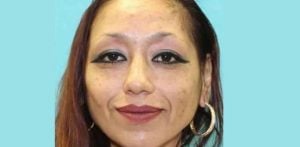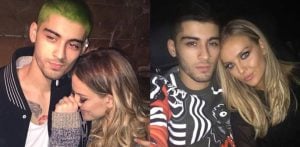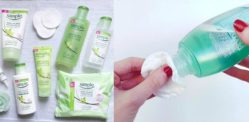It can be a source of discomfort for some.
One temporary facial hair removal method preferred by many beauty connoisseurs is dermaplaning.
Although dermaplaning does remove facial hair, it is described as an exfoliation process by professionals.
Dermaplaning is essentially a method of exfoliation that not only removes layers of accumulated dead skin cells but the fine vellus hair as well.
This painless hair removal method has become increasingly popular recently, with more and more dermaplaning content surfacing on the internet.
You may have seen satisfying videos of people shaving their faces while scrolling through TikTok, YouTube Shorts or Instagram.
Peach Fuzz
 This method of shaving your face essentially removes peach fuzz, or more accurately termed as the ‘vellus hair’.
This method of shaving your face essentially removes peach fuzz, or more accurately termed as the ‘vellus hair’.
Vellus hair is finer, shorter, softer and very often lighter in colour in contrast to terminal hair which is coarser and darker.
Peach fuzz, as the name implies, pretty much resembles the fuzz on a peach.
It can be a source of discomfort for some.
That being said, some people are comfortable with their fuzzy little hairs – it’s normal after all.
Some people have more hair than others; everyone has different amounts and thicknesses of facial hair.
Additionally, it can be more noticeable in some people due to skin tone and texture.
Is Dermaplaning a Good Option for Desi Skin?
 South Asian women have long dealt with the issue of facial hair more than any other race, and because facial hair in Desi skin types generally tends to be dark, the contrast against our skin tones makes facial hair much more visible.
South Asian women have long dealt with the issue of facial hair more than any other race, and because facial hair in Desi skin types generally tends to be dark, the contrast against our skin tones makes facial hair much more visible.
From threading, tweezing, and waxing, many hair removal practices are performed in Desi households.
The method you choose should depend on how thick your hair is, how fast it grows, your lifestyle and of course your personal preference.
Shaving, especially shaving anywhere on the face, has long been considered somewhat of a taboo.
There’s no doubt that shaving gets a bad rep, it’s something Desi mothers have always warned against.
On the other hand, dermatologists, aestheticians, and skincare enthusiasts swear by it.
And hence, the trend of dermaplaning has skyrocketed over recent years as the taboo of women shaving their face has reduced.
Dermaplaning can be a time saver for those of us wanting to get rid of peach fuzz, but is it a safe option for South Asian skin?
Myths and Misconceptions
 Perhaps the biggest myth surrounding face shaving is that the hair grows back thicker or faster.
Perhaps the biggest myth surrounding face shaving is that the hair grows back thicker or faster.
In reality, shaving off your peach fuzz does not make it grow back faster, thicker or darker.
When you shave off terminal hair, like the hair on your scalp or your nether regions, you may end up with stubble as shaving creates a blunt cut that makes the hair appear coarser and more visible.
That doesn’t happen with vellus hair as vellus hair is much more delicate than terminal hair.
Additionally, when shaving with a body razor, the hairs are cut straight across which leaves blunt hair ends.
However, since proper dermaplaning involves a proper angle to remove hair, they grow back tapered and soft.
At-Home Dermaplaning
 Even though the term dermaplaning gets thrown around to refer to any method of face shaving, dermaplaning is originally an in-office procedure.
Even though the term dermaplaning gets thrown around to refer to any method of face shaving, dermaplaning is originally an in-office procedure.
Plus, there’s a difference between in-office and at-home dermaplaning.
In-office dermaplaning involves a sanitised, surgical scalpel used by a licensed professional’s steady hands to remove the topmost layer of skin that bears dirt, oil and dead skin cells.
The good news is that shaving your face at home offers similar benefits to in-office dermaplaning; they both remove the dead outer skin and vellus hairs.
That being said, shaving your face at home is not the same thing as a dermaplaning treatment.
A dermaplaning surgical blade is much more precise and effective than a face razor could ever be.
Any over-the-counter dermaplaning tool is not comparable to the medical-grade scalpel in its sharpness and effectiveness.
Additionally, there’s the safety aspect – there’s a chance you might nick or cut yourself at home.
At-home dermaplaning is something inexpensive that you can do easily from the comfort of your home and can provide great results if done correctly.
Safe at-home devices with foolproof blades are now available that replicate the in-office dermaplaning treatment.
Traditional body razors are not at all suitable to shave your face.
Special dermaplaning tools are available that offer much more ease of use and safety for your delicate facial skin.
At home, dermaplaning can be done using a dermaplaning tool preferably with a guarded edge to avoid any nicks or cuts.
What to Expect
 The effects of dermaplaning are temporary and do not last long, so be prepared to repeat the process every other month or so.
The effects of dermaplaning are temporary and do not last long, so be prepared to repeat the process every other month or so.
Shaving your face is not recommended if you deal with skin issues such as rosacea or eczema.
For areas with denser hair, like the eyebrows or upper lip, other hair removal methods such as waxing or threading may be a safer option.
Following a dermaplaning session, the skin immediately looks smoother and brighter.
Additionally, dermaplaning helps your skincare products penetrate the barrier and hence perform better.
Makeup artists also swear by dermaplaning as it provides a smooth canvas for makeup.
How to Dermaplane at Home
 With your dermaplaning tool in your dominant hand, work in small strokes going downward at a 45-degree angle.
With your dermaplaning tool in your dominant hand, work in small strokes going downward at a 45-degree angle.
Make sure to hold the skin taught with your other hand as you glide the blade across your skin in feather-like strokes.
You can start with removing the vellus hair and layers of dead skin from your cheekbones and continue downwards to your jaw.
Once you’re done with both cheeks, you can finish this process by lightly going over the chin, above the lips, and on the forehead.
Once you’re done, you’re free to apply your skincare as long as the products don’t contain any harsh ingredients.
Some people prefer using facial oil or aloe vera gel before shaving as they provide a frictionless surface for the blade to glide over.
Using either of them is a good idea for a beginner.
Aftercare
 After you shave your face, your skin may look temporarily flushed.
After you shave your face, your skin may look temporarily flushed.
In that case, you should apply aloe vera gel to soothe the skin.
Instead of going in with an exfoliating step right after shaving your face, it’s better to use more hydrating and nourishing products.
One of the most important things to always follow is to sanitise the razor properly and use it on clean skin.
It is also recommended to never use the same face razor twice.
Ultimately, it is important to remember that removing or not removing your facial hair is a personal preference.
If you prefer to remove facial hair by going down the dermaplaning route, then you shouldn’t take the safety measures lightly to keep your skin smooth and nick-free.






























































